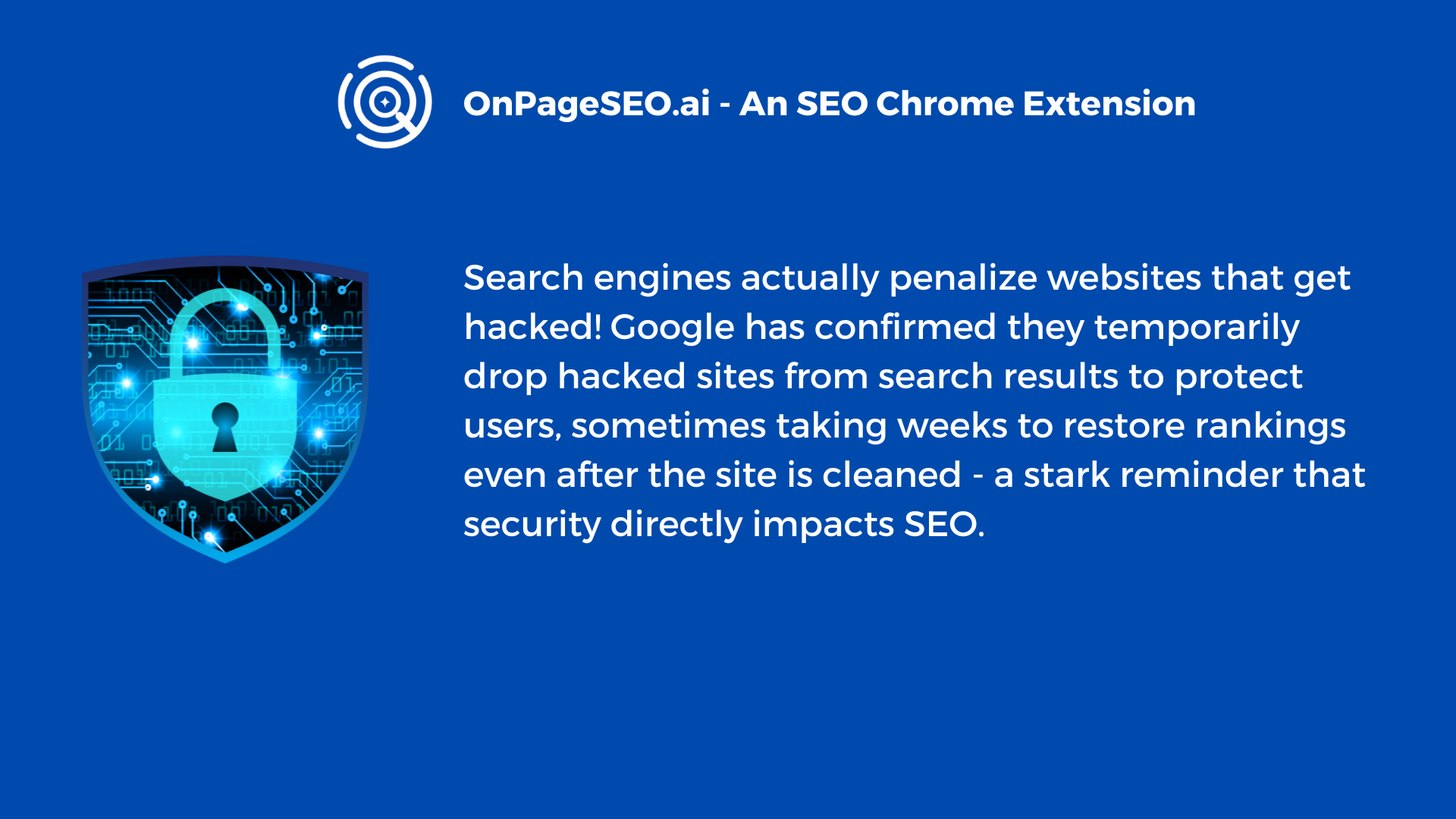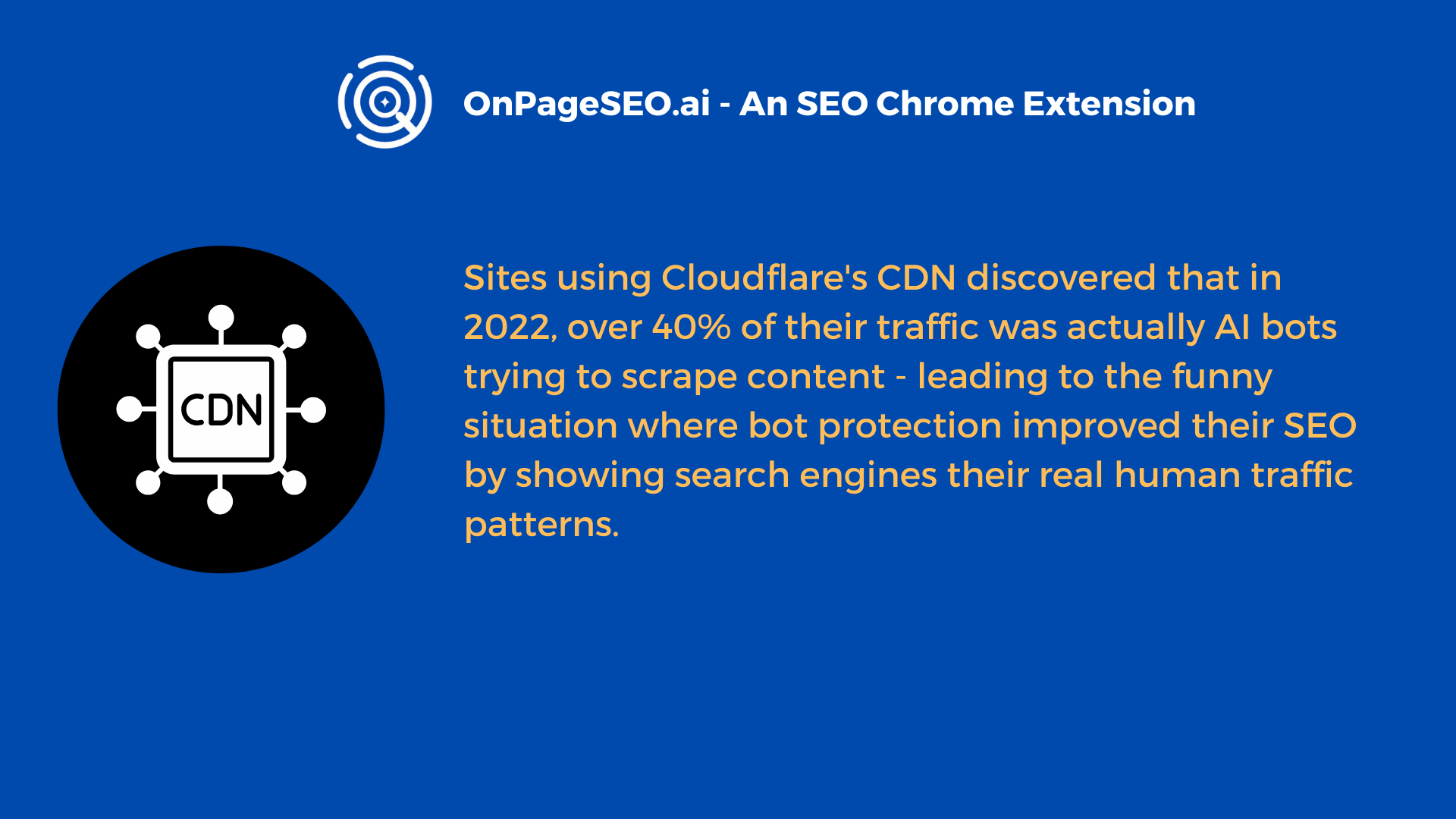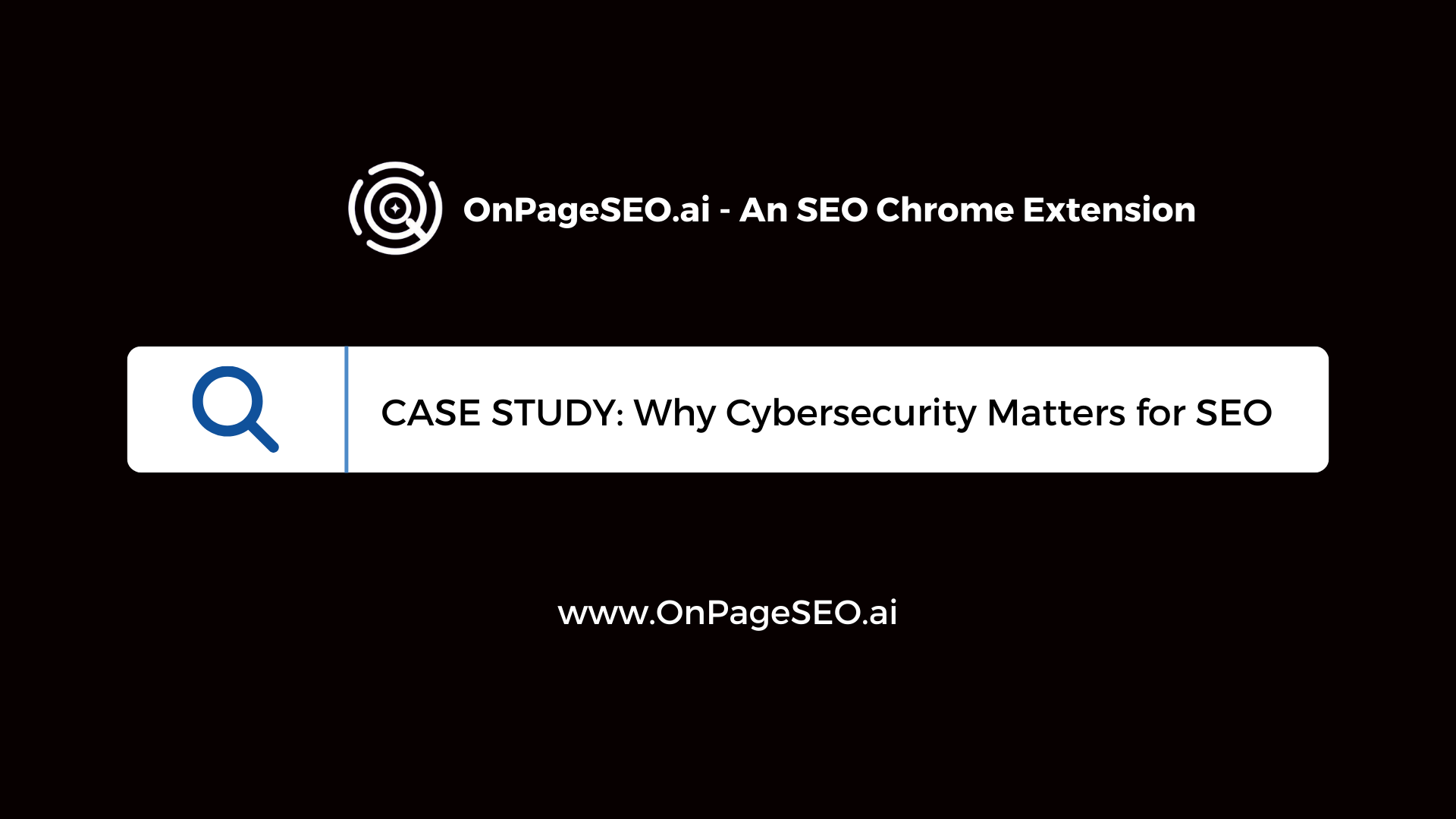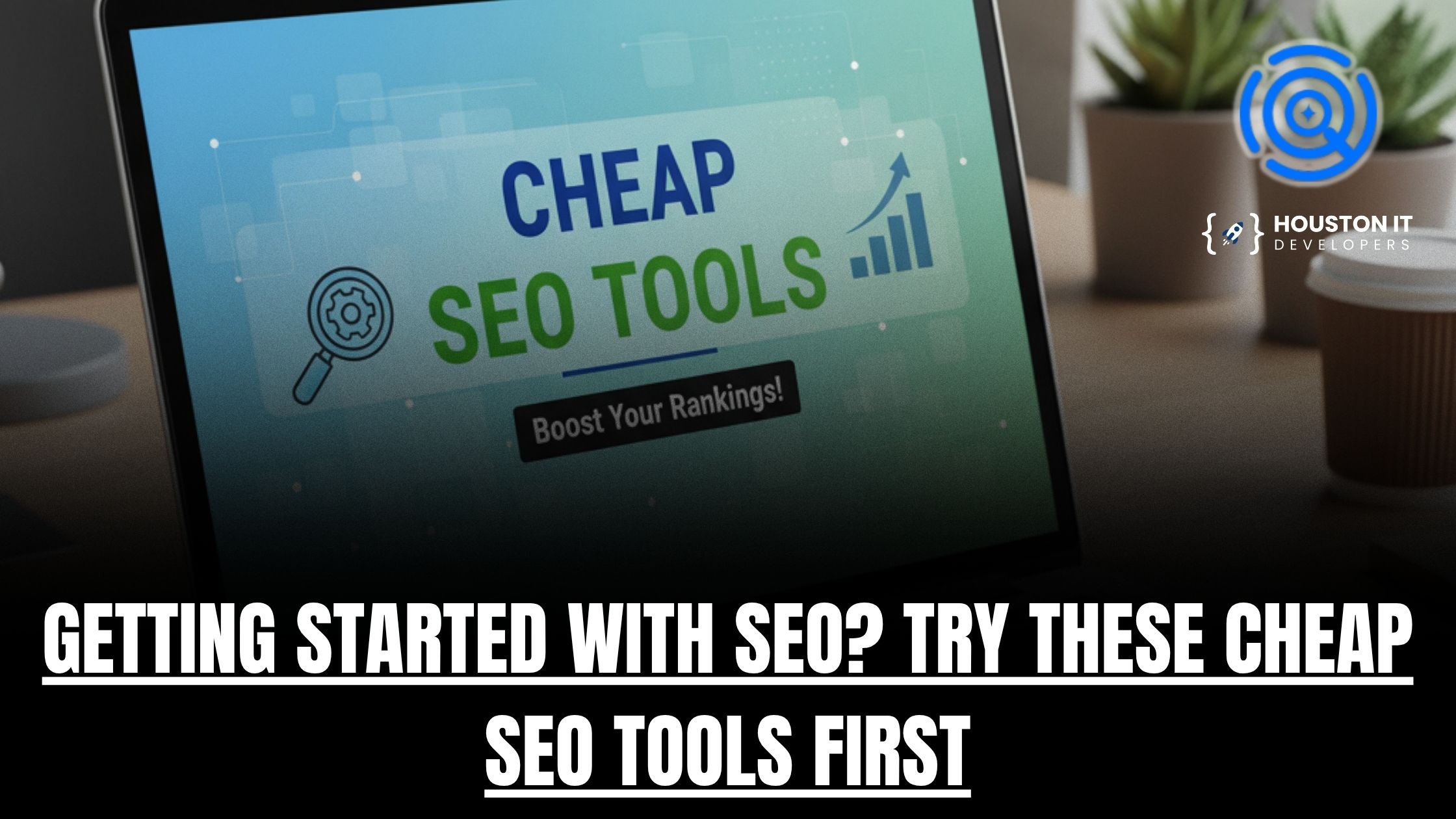Introduction: The Intersection of Cybersecurity and SEO & Why Cybersecurity Matters for SEO
In today’s digital landscape, cybersecurity and search engine optimization (SEO) are closely intertwined. One of the most prominent examples of this connection is Google’s emphasis on HTTPS websites. Starting in 2014, Google announced that having an HTTPS (HyperText Transfer Protocol Secure) website would become a ranking signal, giving secure websites a slight advantage in search engine rankings (Google Webmaster Blog).
By 2018, the Chrome browser began marking all HTTP sites as “Not Secure,” discouraging users from visiting unsecured websites (Google Security Blog). This has had a profound impact on SEO, as sites that failed to adopt HTTPS experienced increased bounce rates, reduced user trust, and lower search rankings. Tools like Let’s Encrypt (Let’s Encrypt Official Site) have made it easier for website owners to adopt SSL/TLS certificates, ensuring secure connections and improved SEO performance.
For instance, companies that transitioned to HTTPS not only observed better security for user data but also gained higher visibility on Google search results. According to a study by SEMrush (SEMrush HTTPS Report), over 95% of the top-ranking pages on Google are HTTPS-enabled. This demonstrates that cybersecurity measures, like securing connections, are now essential for maintaining a competitive edge in SEO.
The Risks of Neglecting Security in SEO Strategies

Ignoring cybersecurity in SEO strategies can lead to severe consequences, as evidenced by the infamous Equifax data breach in 2017 (FTC Report). The breach exposed sensitive information of over 147 million people and resulted in a massive loss of trust among customers. While the primary impact of the breach was financial and reputational, the fallout extended to Equifax’s digital presence.
The breach caused Equifax’s website to receive warnings in search results due to malware and security vulnerabilities. These warnings discouraged users from clicking on the site, leading to reduced organic traffic and a significant dip in search rankings. Additionally, Google’s algorithms penalize sites that are flagged for security issues, further compounding the SEO challenges for breached companies (Search Engine Journal on Security and SEO).
This case highlights the risks of neglecting cybersecurity as part of an SEO strategy. A single data breach or malware incident can tarnish a website’s reputation, diminish search visibility, and lead to lost business opportunities. By prioritizing cybersecurity, companies can protect their digital assets and preserve their SEO performance.
Case Study 1: The Impact of SSL Certificates on SEO Rankings
Transitioning from HTTP to HTTPS: A Necessity
The transition from HTTP to HTTPS has become an essential step for businesses aiming to protect user data and maintain a competitive edge in SEO. One of the most significant initiatives in this area is Mozilla’s Let’s Encrypt, a free, automated, and open certificate authority that has played a crucial role in democratizing SSL adoption (Let’s Encrypt Official Site).
Before Let’s Encrypt, the cost and complexity of obtaining SSL/TLS certificates deterred many small businesses and website owners. Mozilla, in partnership with other organizations like the Electronic Frontier Foundation (EFF), launched this initiative to make encryption accessible to everyone. As a result, HTTPS adoption skyrocketed. By 2021, over 80% of web traffic was encrypted (Mozilla’s Transparency Report).
Google’s emphasis on HTTPS as a ranking factor (Google Webmaster Blog) further accelerated this transition. Websites without HTTPS often faced penalties, such as lower rankings and warnings displayed to users in browsers like Chrome and Firefox. Businesses that transitioned to HTTPS not only protected their users but also secured a better position in search results, making this move critical for both cybersecurity and SEO success.
The SEO Boost from Secure Connections
The implementation of SSL certificates does more than enhance user security—it directly impacts SEO rankings. According to data from SEMrush (SEMrush HTTPS Report), over 95% of websites appearing on the first page of Google are HTTPS-enabled. This correlation underscores the significance of secure connections for achieving top search rankings.
HTTPS impacts SEO in several ways:
1. Improved Trust Signals: HTTPS sites are marked as “Secure” in browsers, reducing bounce rates and building user trust.
2. Increased Click-Through Rates (CTR): Google favors secure websites in its ranking algorithm, which increases the likelihood of higher CTRs for HTTPS-enabled pages.
3. Avoidance of SEO Penalties: Websites without HTTPS may display “Not Secure” warnings, leading to reduced traffic and a decline in rankings.
One notable example is the e-commerce industry, where transitioning to HTTPS has become standard practice. Shopify, a leading e-commerce platform, automatically provides SSL certificates to its users (Shopify Help Center). This integration not only secures transactions but also ensures that all Shopify stores have a fair chance of ranking well on Google.
Additionally, businesses leveraging SSL certificates have seen a significant improvement in user engagement metrics like bounce rate, dwell time, and session duration. These metrics are key indicators for search engines when determining the quality of a website.
Case Study 2: Recovering from a Website Hack: Lessons from Magento
The Consequences of Hacked Websites on SEO
Website hacks can wreak havoc on SEO rankings, user trust, and overall digital performance. A prime example of this is Magento’s vulnerability in 2020, which exposed numerous eCommerce websites to malware attacks (Threatpost Report). This vulnerability was linked to the end-of-life support for Magento 1, leaving many online stores unprotected against security breaches. Hackers exploited these vulnerabilities to inject malicious code, redirect users to spammy websites, and compromise sensitive customer data.
The impact on SEO was significant. Websites affected by the hack saw:
1. Search Rankings Plummet: Google flagged compromised websites with warnings like “This site may be hacked” or “This site contains malware,” reducing click-through rates (CTR) and search visibility.
2. Higher Bounce Rates: Users who encountered warnings or suspicious activity quickly left the sites, increasing bounce rates and negatively affecting SEO metrics.
3. Loss of Organic Traffic: The combined effect of warnings, reduced trust, and poor user experience led to a sharp decline in organic traffic for many Magento-powered stores.
This case underscores the importance of proactive cybersecurity measures to protect not only customer data but also SEO performance. Failing to secure a website can lead to long-term reputational damage and lost revenue for businesses relying on online visibility.
Steps to Recovery and Rebuilding Trust
Recovering from a website hack requires immediate action to mitigate the damage and rebuild trust. One effective strategy involves using Google Search Console alerts to identify and address security issues (Google Search Console Help).
Google’s Search Console provides detailed alerts and reports when a website is compromised, helping site owners quickly:
1. Identify Malware and Security Issues: By pinpointing the exact files or scripts causing the issue.
2. Submit a Reconsideration Request: After resolving the issue, site owners can request Google to remove the warning labels, restoring their site’s reputation in search results.
3. Monitor Recovery Progress: Track improvements in search rankings and ensure no further vulnerabilities are exploited.
One Magento-powered business used Search Console to detect and remove malicious redirects injected by hackers. By collaborating with cybersecurity experts and implementing regular malware scans with tools like Sucuri (Sucuri Official Site), they successfully cleaned their site and restored trust. The website also transitioned to a newer, more secure platform (Magento 2), which offered built-in security features to prevent future attacks.
This proactive approach allowed the business to regain search rankings and rebuild customer confidence. They also invested in additional SEO strategies, such as publishing updated content and engaging in link-building campaigns, to recover from the loss of organic traffic.
Case Study 3: Mitigating DDoS Attacks and Its SEO Implications
SEO Disruptions Caused by Downtime
Downtime caused by Distributed Denial of Service (DDoS) attacks can severely impact SEO performance. One of the most notable examples is the Dyn DNS attack in 2016, which disrupted major websites like Netflix, Reddit, Twitter, and Spotify (Wired Report). The attack leveraged an army of infected IoT devices to overwhelm Dyn, a key DNS provider, rendering many high-profile websites inaccessible for hours.
From an SEO perspective, the consequences of downtime can include:
1. Reduced Crawlability: Search engines like Google may encounter errors while crawling the site, leading to missed indexing opportunities.
2. Increased Bounce Rates: Users trying to access a downed website often leave quickly, signaling poor user experience metrics to search engines.
3. Loss of Organic Traffic: Extended downtime results in reduced visibility in search rankings, as Google prioritizes reliable websites.
4. Damaged Reputation: Repeated outages can erode user trust, making it harder to regain search momentum.
This incident highlights how vulnerable even the largest platforms are to DDoS attacks and the cascading impact on their SEO performance and user trust. Businesses of all sizes must prepare for such threats to avoid severe disruptions.
Leveraging CDNs to Protect Site Performance

Content Delivery Networks (CDNs) are critical tools for mitigating DDoS attacks and ensuring uninterrupted site performance. Cloudflare, a leading CDN provider, has been instrumental in protecting websites during high-profile DDoS attacks, minimizing the damage to SEO and user experience (Cloudflare Blog).
One example of Cloudflare’s effectiveness is its response to a record-breaking DDoS attack in 2021, which involved over 17.2 million requests per second. Cloudflare successfully absorbed the traffic, preventing downtime and ensuring that the affected websites remained operational. For SEO, this meant:
1. Maintained Uptime: Continuous availability ensured that search engine crawlers could index pages without errors.
2. Improved Load Speeds: CDNs like Cloudflare cache content across global servers, reducing latency even during traffic surges.
3. Enhanced User Trust: Visitors were able to access the websites without disruptions, preserving trust and engagement metrics.
Cloudflare’s “Under Attack” mode, a feature specifically designed to combat DDoS threats, can temporarily display a challenge page to filter malicious traffic. This ensures that genuine users can still access the website while search engines continue to crawl it. Businesses using this strategy have reported significant reductions in the SEO damage typically associated with downtime.
Additionally, integrating other tools like Sucuri and Akamai (Akamai Official Site) can further bolster a site’s defenses, providing multi-layered protection against DDoS attacks and maintaining SEO performance during peak traffic periods.
Case Study 4: Protecting User Data and SEO Reputation
The Role of GDPR and Privacy in SEO
The General Data Protection Regulation (GDPR), introduced by the European Union in 2018, revolutionized how companies handle user data. This regulation not only mandated stricter privacy controls but also had a significant impact on SEO strategies. Companies like Google had to adapt quickly to comply with GDPR requirements while maintaining their search engine services (Google GDPR Compliance Guide).
Key changes implemented by Google to align with GDPR included:
1. Consent for Data Collection: Websites using Google Analytics or Google Ads were required to obtain explicit user consent for tracking cookies and data processing.
2. Anonymization of Data: Google introduced tools to anonymize IP addresses and other personal data, ensuring compliance with GDPR without sacrificing analytics functionality.
3. Transparency in Data Practices: Google updated its privacy policies to clearly explain how user data is collected and used.
From an SEO perspective, GDPR compliance has led to better user trust and engagement. Websites that proactively implemented GDPR-compliant practices—such as cookie consent banners and clear privacy policies—experienced higher click-through rates (CTR) and improved organic traffic. For example, a case study by Statista showed that websites with transparent data collection practices saw a 10% boost in user retention post-GDPR implementation (Statista GDPR Insights).
These examples highlight how aligning SEO strategies with privacy regulations not only avoids legal penalties but also enhances a website’s reputation and search performance.
The SEO Benefits of Privacy-First Strategies
Adopting privacy-first strategies is more than a compliance measure—it’s a competitive advantage. Apple has been a pioneer in promoting user privacy, leveraging this approach to build trust and improve brand reputation. Its privacy-first policies, such as App Tracking Transparency (ATT), have set new standards for the tech industry (Apple Privacy Overview).
Apple’s emphasis on privacy has positively influenced SEO in several ways:
1. Increased User Trust: By prioritizing privacy, Apple has positioned itself as a trustworthy brand, which translates to higher user engagement and longer dwell times—key factors for SEO.
2. Improved Search Visibility: Transparency about data usage often results in better user reviews and higher click-through rates, which search engines consider when ranking pages.
3. Stronger Brand Equity: Privacy-focused strategies strengthen brand loyalty, leading to increased organic searches and backlinks, further boosting SEO rankings.
A notable example of privacy-first SEO success comes from Apple’s marketing campaigns for its privacy features, such as the “Privacy. That’s iPhone.” campaign. This not only reinforced Apple’s brand values but also drove organic traffic to their website, improving their overall search visibility.
Businesses that adopt similar privacy-focused practices can achieve significant SEO benefits while safeguarding user data. Tools like OneTrust (OneTrust Official Site) and TrustArc provide solutions to ensure compliance with privacy regulations, helping companies enhance both user trust and search engine performance.
Tools and Strategies for Strengthening Cybersecurity in SEO
Tools to Monitor and Protect Your Website
Effective cybersecurity starts with the right tools to identify and mitigate potential threats. Integrating tools that monitor both security and SEO health ensures your website is secure while maintaining its search performance. Here are some essential tools:
1. Sucuri
Sucuri is a leading security solution for website owners, offering comprehensive malware scanning and removal services (Sucuri Official Site). It actively monitors websites for vulnerabilities, malicious code, and potential breaches, ensuring that your site remains secure. By preventing malware infections, Sucuri protects your site from being flagged by search engines, which can result in traffic loss and SEO penalties.
2. Ahrefs
Ahrefs is a popular SEO tool that also provides insights into your website’s security through its Backlink Checker (Ahrefs Official Site). By identifying toxic or spammy backlinks, Ahrefs helps prevent SEO damage caused by negative SEO attacks. Removing harmful backlinks can protect your site’s ranking and maintain its reputation.
3. OnPageSEO.ai SEO Chrome Extension
This tool is essential for monitoring the technical SEO health of your site. It evaluates key aspects like header structure, broken links, and site indexability, while also scanning for security issues that might indirectly impact SEO (OnPageSEO.ai Official Site). Keeping your technical SEO in check ensures that your site remains optimized and free from errors that could harm search engine rankings.
By leveraging these tools, businesses can proactively safeguard their websites and protect their SEO performance from potential threats.
Proactive Security Measures for SEO Success
Proactive measures are critical for preventing security breaches that can harm your SEO. One example of a proactive approach is Shopify’s built-in SSL, which has been instrumental in securing small business eCommerce websites (Shopify Help Center).
SSL certificates (HTTPS) encrypt data transmitted between a user’s browser and the website, preventing hackers from intercepting sensitive information like credit card details. Shopify automatically provides SSL certificates for all its users, ensuring that even small businesses comply with Google’s security standards and avoid SEO penalties for unsecured sites.
Here’s how Shopify’s SSL implementation benefits SEO:
1. Improved Rankings: Google prioritizes HTTPS websites, which means Shopify users gain a ranking advantage over non-secure competitors.
2. Enhanced User Trust: SSL-secured websites display a “lock” icon in the browser, signaling to users that the site is safe, reducing bounce rates and improving engagement.
3. Streamlined Compliance: Built-in security features simplify the process of meeting regulatory and SEO requirements, allowing business owners to focus on growth.
Additionally, integrating proactive tools like Cloudflare for DDoS protection and Wordfence for WordPress security can further enhance website security and ensure uninterrupted SEO performance (Cloudflare Official Site, Wordfence Official Site).
Conclusion: Cybersecurity as a Pillar of SEO Success
Key Takeaways from These Case Studies
The intersection of cybersecurity and SEO is undeniable, as seen in the real-world examples discussed in this article. Each case study highlights actionable insights that businesses can adopt to enhance both their security and SEO performance:
1. Transitioning to HTTPS: The example of Mozilla’s Let’s Encrypt initiative underscores the importance of SSL certificates for SEO rankings and user trust. Secure websites not only comply with Google’s requirements but also improve user engagement and search engine visibility.
2. Mitigating Hacks and Malware: The Magento vulnerability in 2020 serves as a cautionary tale. Proactively monitoring and securing your website using tools like Google Search Console and Sucuri can prevent long-term damage to SEO performance.
3. Combating DDoS Attacks: The Dyn DNS attack in 2016 showed how downtime caused by cyberattacks can disrupt SEO rankings. Leveraging CDNs like Cloudflare ensures consistent website uptime, safeguarding SEO metrics and user trust.
4. Protecting User Privacy: GDPR compliance and privacy-first strategies, exemplified by companies like Google and Apple, highlight the SEO benefits of building trust with users through transparent and secure data practices.
These case studies demonstrate that cybersecurity is not just a technical requirement—it’s a foundation for maintaining and improving search visibility, user engagement, and brand reputation.
The Future of SEO and Cybersecurity
As search engines like Google continue to evolve, cybersecurity will play an even greater role in determining SEO success. One key area of focus is Google’s Core Web Vitals, which prioritize page speed, interactivity, and visual stability (Google Core Web Vitals Guide). Secure browsing is integral to this initiative, as it directly impacts user experience and trust.
Google’s updates increasingly emphasize the importance of secure browsing experiences. For example:
• Chrome’s HTTPS-Only Mode: Google is expanding its push for HTTPS by introducing features like HTTPS-Only Mode, which defaults all connections to secure protocols unless unavailable (Google Security Blog).
• AI and Security: Future algorithm updates may incorporate AI-driven assessments of a website’s security posture, penalizing sites that fail to implement adequate protections against emerging threats.
Businesses that align their SEO strategies with these trends by adopting robust cybersecurity measures will gain a competitive edge in search rankings and user trust.
In conclusion, as the digital landscape becomes more complex, businesses must recognize that cybersecurity is not optional—it’s a fundamental pillar of sustainable SEO success. By proactively integrating security into their SEO strategies, companies can protect their online presence, enhance user trust, and ensure long-term growth.



